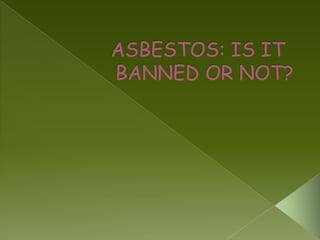Asbestos is a fibrous silicate material known for its resistance to acid and fire, used in various industries for insulation and building materials. Despite its long history of use dating back to ancient times, health risks associated with asbestos exposure have become increasingly evident, leading to calls for its ban due to related health hazards. The author expresses a personal opinion advocating for a total ban on asbestos due to its dangerous chemical properties.








